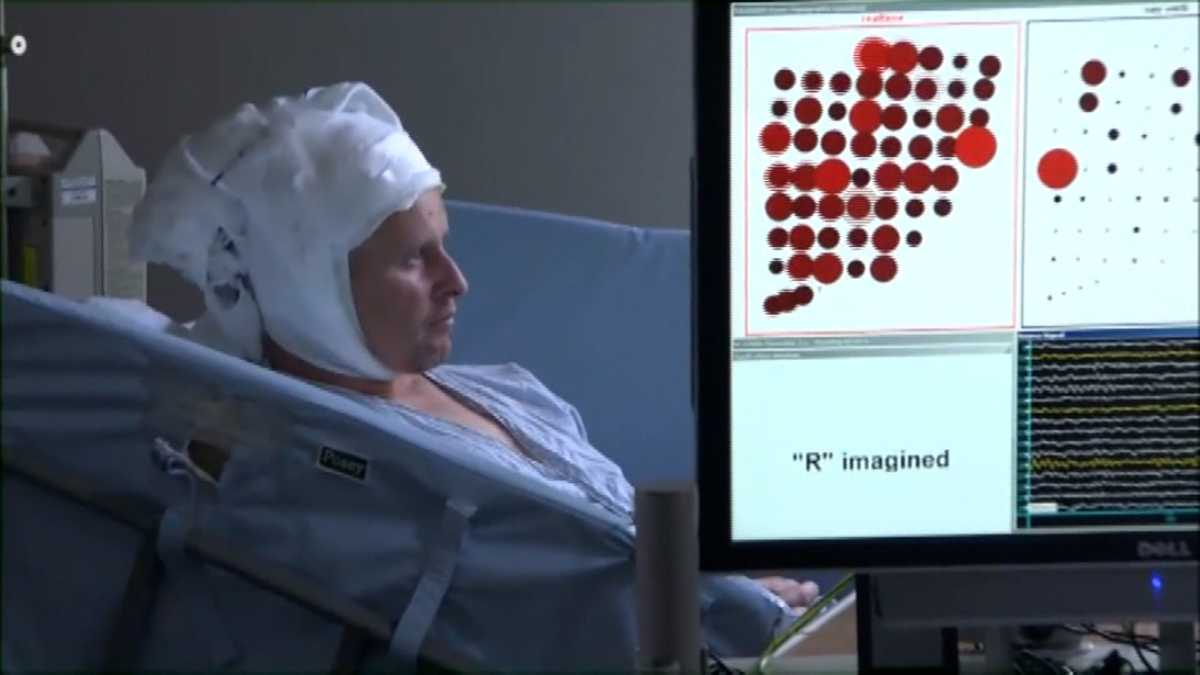Scientists recreate hit Pink Floyd song using patient brain waves

The lyrics to Pink Floyd’s “Another Brick in the Wall” may say that “we don’t need no education” and that “we don’t need no thought control,” but that isn’t stopping scientists at a New York college from using the song to learn more about brain functions.Peter Brunner, a neurosurgery professor who works in St. Louis and at Albany Medical College, is working with other scientists and 29 patients with epilepsy to better understand the brain.Using the song and the research associated with it, scientists hope to not only help epilepsy patients but also patients with a variety of disorders, Brunner told WRGB.To conduct the experiment, researchers played the hit Pink Floyd song to patients. After they listened to the song, the team used neural recordings of the patient’s brain signals and stimulus reconstruction to recreate the song. The research was first published in PLOS Biology scientific journal in August.In the video player above: Hear from the neurosurgery professor and listen to a piece of the song recreated with brain signals”We were looking for a song that had all these different components, lyrics, melodies, some silence components, some instruments,” Brunner said. “They suggested it and everybody liked it and I think every single patient and their families liked it too so it was a very good choice, Im quite happy we picked Pink Floyd and not something else from the 80s.”Brunner said the research has “allowed us to make significant progress not just in understanding but also in the translation of these understandings into therapies, into better diagnostic options, essentially to help patients with very specific neurological disorders and diseases.” “In people who have traumatic brain injuries and other conditions, we can now better understand why they may perceive the world in a different way,” Brunner said.The professor predicts the research will be able to be used down the road to help with additional brain research. “What we’re now interested in is understanding how we can perturb this perception mainly to alleviate specific conditions where people may not be able to pay enough attention or may not be able to memorize all of the information that comes in,” he said. “So we’re interested in deeper brain structures that govern information flow throughout the brain.”“ … We are interested now in the next chapter, which is neuromodulation.”The neurology professor said that “the human brain is really the last frontier.” “We know as little about the human brain as we know about the floor of the ocean. It’s really an unexplored territory,” he said.Brunner is excited about using the song in the research project. “I think they’re just quite happy that their music provides value beyond just entertaining people,” he said.
The lyrics to Pink Floyd’s “Another Brick in the Wall” may say that “we don’t need no education” and that “we don’t need no thought control,” but that isn’t stopping scientists at a New York college from using the song to learn more about brain functions.
Peter Brunner, a neurosurgery professor who works in St. Louis and at Albany Medical College, is working with other scientists and 29 patients with epilepsy to better understand the brain.
Using the song and the research associated with it, scientists hope to not only help epilepsy patients but also patients with a variety of disorders, Brunner told WRGB.
To conduct the experiment, researchers played the hit Pink Floyd song to patients. After they listened to the song, the team used neural recordings of the patient’s brain signals and stimulus reconstruction to recreate the song. The research was first published in PLOS Biology scientific journal in August.
In the video player above: Hear from the neurosurgery professor and listen to a piece of the song recreated with brain signals
“We were looking for a song that had all these different components, lyrics, melodies, some silence components, some instruments,” Brunner said. “They suggested it and everybody liked it and I think every single patient and their families liked it too so it was a very good choice, Im quite happy we picked Pink Floyd and not something else from the 80s.”
Brunner said the research has “allowed us to make significant progress not just in understanding but also in the translation of these understandings into therapies, into better diagnostic options, essentially to help patients with very specific neurological disorders and diseases.”
“In people who have traumatic brain injuries and other conditions, we can now better understand why they may perceive the world in a different way,” Brunner said.
The professor predicts the research will be able to be used down the road to help with additional brain research.
“What we’re now interested in is understanding how we can perturb this perception mainly to alleviate specific conditions where people may not be able to pay enough attention or may not be able to memorize all of the information that comes in,” he said. “So we’re interested in deeper brain structures that govern information flow throughout the brain.”
“ … We are interested now in the next chapter, which is neuromodulation.”
The neurology professor said that “the human brain is really the last frontier.”
“We know as little about the human brain as we know about the floor of the ocean. It’s really an unexplored territory,” he said.
Brunner is excited about using the song in the research project.
“I think they’re just quite happy that their music provides value beyond just entertaining people,” he said.
https://www.wlwt.com/article/scientists-recreate-pink-floyd-song-with-brain-waves/45017483 Scientists recreate hit Pink Floyd song using patient brain waves



